To mark Advent and celebrate success in the world of internal communication, I’m highlighting a story a day by internal communicators via my blog in a countdown to Christmas.
Every day until 24 December I am sharing the thoughts of IC pros who have written guest articles, with the final one going live on Christmas Eve.
I’ll then be taking a break and be back in January. Thank you to everyone who has contributed to my blog this year, it’s always good to feature new voices and a variety of writers and highlight what’s working well – and what there is to learn from situations that don’t go quite as planned.
Today’s is by Natalie Benjamin, Product Director at Comment8, an internal communication and engagement consultancy based in Buckinghamshire in the UK. She trained as a journalist and moved into corporate communication and PR before specialising in employee communication and has a particular interest in the leader’s role as a communicator. This article originally appeared on my blog in February 2013.
Internal communication is not a haphazard destination
“The influx of social media and the erosion of trust in politics and the media alike means that we’re working with savvier consumers of communication than ever before. Internal communication (IC) and its importance are elevated beyond recognition and, as practitioners, we’ve got to keep pace.”
 Yesterday, internal communicators gathered at the London Symphony Orchestra’s St Luke’s venue for a conference called Start The Conversation.
Yesterday, internal communicators gathered at the London Symphony Orchestra’s St Luke’s venue for a conference called Start The Conversation.
Conversations have the potential to make or break organisational change, and they sit at the heart of communication. The conference aimed to look at whether employees really care and understand the part they play. Natalie has captured her thoughts from the event to share with you, so I’ll hand over to her…
Start the conversation
Adrian Moorhouse, Managing Director of Lane4 Group, opened the day by talking about the importance of a compelling organisational vision, particularly during times of change. Challenging leaders to capture hearts and minds, as well as crunch numbers and share data, he suggested that strategy communication can be broken down into three levels: outcome, performance and process. He said that communication at visionary, or outcome level, is most critical for engagement.
Let’s look at those areas:
Outcome – What we’re here to achieve, beyond hitting the numbers. Adrian quoted a pharmaceutical organisation’s meaningful vision to ‘save more lives’ rather than to be ‘the world’s leading pharmaceutical brand’
Performance –The measures, the numbers, the ways of knowing if you’re on track. Important components of strategy, but not necessarily the most engaging level of communication
Process – Things that need to be in place to achieve the Key Performance Indicators (KPIs). Too often, leaders focus on communicating these elements rather than helping people to understand why we’re doing these things.
Next came the powerful pairing of George Mayhew, Corporate Affairs Director at UK energy provider National Grid and Fiona MacAllan, Head of Corporate Communication and Citizenship at Nationwide bank.
George challenged the wider communications practice to treat employees with equal importance. After all, we’re all talking to each other. He called for IC to develop a thick skin but to watch that it doesn’t get so thick that we can’t respond to feedback.
IC isn’t a haphazard destination
He challenged us to develop a thirst for best practice and to never be complacent, saying: “If I started to say that I’ve been doing this job for x years and that I know what works because it’s worked before, I wouldn’t have a job.” Referencing National Grid’s ‘end to end’ communication approach and the importance of an aligned narrative, George insisted that internal communication “must be a role for specialists, rather than a haphazard destination.”
Building on his call for rigour to a naturally intuitive discipline, Fiona shared her four-year transformation at Nationwide, leaving the audience under no illusions as to what an end-to-end process was. Talking the language of the business, rather than that of communicators, and measurement as our mandate to operate seemed particularly resonant. “Internal Communication, when working well, can move an organisation.”
Rowing to success
 Greg Searle, (pictured), London 2012 Olympic medallist, shared his truly inspirational story. He returned to rowing 20 years after his first Olympic medal to claim a bronze, aged 40, in London last year. Citing honest team communication as a critical component of success, he talked about a one-team mindset and that ‘no one is more special’. Making the link between our roles as collaborators was an easy and powerful connection and, our Twitter feed showed an immediate response to such a compelling tale of triumph and adversity.
Greg Searle, (pictured), London 2012 Olympic medallist, shared his truly inspirational story. He returned to rowing 20 years after his first Olympic medal to claim a bronze, aged 40, in London last year. Citing honest team communication as a critical component of success, he talked about a one-team mindset and that ‘no one is more special’. Making the link between our roles as collaborators was an easy and powerful connection and, our Twitter feed showed an immediate response to such a compelling tale of triumph and adversity.
10 minute spotlight sessions followed on:
Where IC should sit? – “While it doesn’t matter where it sits, it can have an impact on its effectiveness”, suggested Zara Whysall, Head of Research & Product at Lane4. A show of hands demonstrated a relatively even split between HR and Corporate Comms, with a sprinkling of other homes.
Message passing vs making somebody care – Dominic Mahony questioned the effectiveness of the ‘hackneyed cascade’, likening it to a waterfall where meaning seeps. He called for communicators to adopt a waterwheel philosophy, where we learn from feedback and truly engage with the grapevine
Performance psychologist Austin Swain focused on the Communicator as Influencer, citing typical reasons for being influenced (liking; reciprocity; authority; socialisation; scarcity and commitment, all underpinned by trust) asking us to consider our experiences of this and questioning how equipped we are to influence effectively.
Jonathan Zneimer followed with a facilitated reflection session, allowing us time to consider our roles and strengths across 4 S’s:
- Start real conversations between people
- Shape conversations. Help others to understand the vision. Shape how others communicate
- Share conversations. Help leaders to understand the employee voice
- Shift the type of conversations people have through the organisation. Change behaviour through your internal communication
The E Word (engagement)
Tom Smith and I were next, sharing the output of our launch white paper, ‘The E Word and what it means for IC’. (You can download it here – Rachel). We looked at: over and ineffective measurement of engagement; the role of leader as Chief Engager, the role of internal communication as educator (ensuring people understand how communication can drive engagement and what constitutes truly great communication), as well as enablers (helping people to communicate well rather than doing it all ourselves) were key.
As the E word infiltrates more internal communication job roles and remits, we need to ensure that we don’t just contribute to the debate, but that we shape it. We talked about how educated IC pros are on engagement and whether we can analyse data and synthesise themes with rigour.
 The final presentation of the day was Sky news presenter Hannah Tallett (pictured), who shared her stories of communicating under pressure. Simplicity and trust; being on the side of your audience; managing your own emotions and asking the difficult questions were immediately transferable and insightful take-aways. You can follow her on Twitter @SkyTallett
The final presentation of the day was Sky news presenter Hannah Tallett (pictured), who shared her stories of communicating under pressure. Simplicity and trust; being on the side of your audience; managing your own emotions and asking the difficult questions were immediately transferable and insightful take-aways. You can follow her on Twitter @SkyTallett
It made me think about how communication flows in breaking news stories and how some of the challenges are replicated in our organisations – dealing with ambiguity, trusting your sources, working in a high pressure team environment. It also made me consider the ‘total internal communicator’ – an influencer, a coach, commercially astute, media-savvy and understanding the employee better than most.
Post author: Natalie Benjamin.
Thank you for sharing your thoughts from the event Natalie, it certainly sounded like a packed agenda.
Your opening paragraph about how IC pros are now ‘working with savvier consumers of communication than ever before’ is true. However, I think it’s critical that we remember people/employees are not just ‘consuming’ information, but reacting and responding. The shift to focusing on two-way communication is key, and any elevation or sense of importance needs to be channelled in the right direction.
Rachel Miller.










